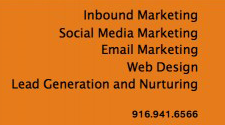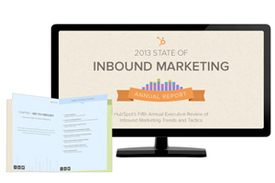When a leader of an institution as large and important as the US Navy discusses the importance of social media, it's worth paying attention. There are a multitude of reasons why the US Navy would resist social media - yet instead it has become one of their key communications tools.
My message? If you aren't down the road on your social media strategy, you are missing the boat!
Chief of Naval Operations Adm. Gary Roughead
Institute for Public Relations Strategic Communications Summit
June 6, 2011
Download in PDF FormatIts a pleasure for me to be here to spend a little bit of time with you and talk a bit about the Navys view toward communication. [Acknowledged introduction by Mr. Bob Grupp, President, Institute for Public Relations]
What Id really like to do and Im very pleased to be able to do is spend some time talking about how the Navy a global organization that has been in business for over 230 years, an organization of roughly 600,000 people is evolving its approach to how we communicate and how we see some of the changes taking place.
I think the speed with which information moves in our operations, and the changing technologies that we have at our disposal today to move it, is something extraordinarily important to those of us who wear this uniform, and I would say any uniform in our military. For decades, we have understood the imperative for speed and accuracy in communication at ever greater ranges, and ever more fidelity. Thats not to say for a moment that I believe we have ever mastered the art of communications; I think most Sailors would agree with Adm. Nimitz, one of my predecessors, who in 1948 wrote that technology in warfare, as in all else, has simplified some details but has greatly complicated the aggregate. At least I think we have always recognized the need to keep pace, and to learn lessons more quickly than our adversaries.
At times all of us have bemoaned the pace of communications. In fact, another one of my predecessors, Adm. Arleigh Burke, who in the early 20s, was known to have made the comment that, Going to sea used to be fun. And then they gave us radios. So times have not changed, but we also know that we cant turn back the tide.
The tempo of media and information, the pace of development that advances on a daily or even hourly basis is sometimes dizzying, and while we have recognized for some time the growing imperative of transparency in our external communications, we have only recently started to come to terms with the demand for radical transparency. The Navy is not unique to other large organizations in this respect, but I believe we potentially have even more to gain than some others in terms of the public trust and the confidence of our international partners by responding to that demand.
For whether we embrace the fundamental communications changes underway today or not, our talented young workforce not only embraces them, they know nothing else. As leaders, then, its not enough that we keep pace with these changes we must lead the change.
Today, Id like to talk about what I believe that means for us as leaders.
As professional communicators, you know better than anyone how dramatically the accelerating changes in media and information have changed the way we communicate, not only as organizations but as individuals.
Certainly there are going to be more changes that are coming; I believe we are just scratching the surface right now. These changes on the horizon will be, as they have been, as much cultural as they are technological.
Whether your organization is as broad in scope as our Navy, or if youre a young startup trying to break into a market, these changes have had profound implications in how we communicate with our stakeholders.
But these changes in the media environment dont just affect an organizations communication professionals, they have implications for every member of the organization, and leaders in particular.
Im sure many of you are familiar with the work of author and practitioner Brian Solis, of the Altimeter Group. Brian made the point that in todays media environment, we no longer simply communicate with an audience we communicate with an audience of audiences, because the people who hear our message are themselves connected individuals with a networked audience of their own.
I submit to you that in todays media environment, as leaders whether we recognize it or not we are no longer simply leading a workforce of employees or, in my case, Sailors. We are leading a workforce of communicators.
There is a tendency for leaders to consider these changes in terms of the costs and risks of adoption versus the potential benefits. And I did that myself a couple of years ago when we were in the process of looking at how far forward we would lean with regard to using social media.
There were many within our organization who warned that there were too many risks to the security of our networks to allow our Sailors to participate in social networks. They wanted our fleet to be a floating walled garden, with very high walls I might add. And their concerns were not unwarranted, when you get into the security dimension of what were talking about.
Those risks are real and they have to be mitigated, and that costs money. At first I didnt know if spending the money would be worth it, but it soon became clear to me that opting out neither guaranteed security, nor served our interests in transparency, outreach, and advocacy. Rather than consider whether we could afford to participate, we came to the conclusion that we couldnt afford not to participate.
We made the decision to engage in social media, as many of your own organizations did, when we recognized that whether we participated or not, there was going to be an ongoing conversation about the Navy and we were not content to be absent from that conversation.
So we joined that conversation, and the term that Ive used is, were burning the boats. Theres no going back. Were committed irreversibly, and in the end it was one of the easiest decisions Ive made as the Chief of Naval Operations.
Leaders have to lead by example and be part of engaging a wide array of audiences, and they must approach it with eagerness not defensiveness or trepidation. The key to success as a leader is to recognize that there is an opportunity indeed an obligation to listen to your people, to add another dimension to your awareness.
When the earthquake and tsunami in Japan occurred, for example, the Facebook pages of our local commands there lit up immediately.
In a matter of six hours, that wave of information spread outward from our local bases in Japan, to our Fleet HQs in Hawaii and on the west coast, all the way here to Washington [DC] such that I could engage the public directly and accurately on the situation. Local commands posted emergency warning broadcasts for the world to see ahead of the global news outlets, but we were doing more than providing event updates; they were responding to questions from Sailors and families, who themselves were sharing information with those we had yet to reach.
In the following days, as concerns developed over radiation hazard for our Sailors and families based in Japan, and as about 20 or so Navy ships arrived to help provide relief to our Japanese allies, those conversations proved critical in helping Navy families exercise their option to leave the country at no cost. I was able to look at the Facebook threads and see what questions people had; where there remained areas of confusion and concern and what areas we needed to address.
Virtual listening didnt replace the regular reports I received on relief supplies, the number of families affected, or the extent of radiation in affected areas, but it certainly augmented them and provided a rich context for understanding the situation my Sailors and their families were facing and what actions were needed most.
The power of this expanded ability to listen to my Sailors and their families first struck me here last year on our own soil, when I saw it firsthand following a massive flood that we had at our personnel headquarters in Millington, Tennessee, where all of our Human Resources activity takes place.
All of our personnel systems were down they were hard down and the Sailors and families who lived on the base had to evacuate in the span of about two hours because of the rate of the flood rise. I was getting very good information from the official reporting channels that we had perfected over the years from the chain of command.
But it was on the weekend. I was at home. Simply sitting at my desk, in my office at home, I went on to the commands Facebook page in Millington, Tenn. I can tell you, for me that was the A-ha moment. It was as if I was there. I could see in near real-time the concerns of the people who were affected by the flood and how the command was helping. A family member would post a comment that they had left behind important medication, and shortly thereafter Id see a doctor come up on the page and tell them, Meet me in the gymnasium in 20 minutes, and Ill have what you need. People were asking questions, they were getting them answered, and you could see their anxiety ratchet down as this conversation was taking place.
As a leader observing these interactions, I had a feel for the situation during this crisis, and there was a richness and speed to the information, that no amount of official reporting, no matter how good it was, could give me. It allowed me to empathize with my Sailors and their families in a way that helps me better lead.
Listening doesnt just make for better leaders, it makes for better organizations. Your people expand your entire organizations ability to listen to each other and others outside the organization, but only if you empower them to do so.
Several communities in our Navy, such as our lawyers and our logistics experts, benefit greatly from having junior officers maintain Facebook pages and official blogs for their peers and those considering a career in the Navy. By doing so, these communities are better able to support and mentor their entry-level personnel, and over time, even address some of their attrition and retention challenges.
And thats not just a function of social media. It is an
approach, not a technology. It is a benefit of transparency that for far too long has gone largely unrecognized.
When talking about transparency, most organizations only think about being more clear and open to others who are looking in. The more valuable transparency also looks outward, and allows the world outside the organization to be more open to those within the organization. If you empower those you lead to listen, you dont have a one-way mirror where others can see in to your organization but you cant see out you let your people be your open window to the world. In doing so, you stand to benefit from perspectives of those outside your immediate circle. Many leaders already do this when we seek alternative analyses as input to our decision-making, presumably because we are conscious of how complex the issues are. We are somehow less aware or too comfortable with what we think we know about our institutions core competencies, when by opening our aperture on daily activities we might gain from allowing the people we lead to help us connect to the communities we serve.
When you connect with the community you serve, you have the opportunity to establish trust. That was behind our thinking in 2008 when we established Navy for Moms as a new plank in our outreach and advocacy platform. Today, some 40,000 Navy families and interested citizens connect at this website, where the content is member-driven, and routinely demonstrates to us the power in permitting Sailors, spouses, and parents to share information with the families of future sailors. This past March, our Navy Recruiting Command received the Optimas service award for advancing Navys objectives within their unique approach to building advocacy.
For several years weve also paid special attention to how we build trust with our global maritime partners. These partnerships contribute to our national security and include the navies of friends and allies, but also our interagency partners and non-governmental organizations. And while you can surge ships, and aircraft, and Navy SEALs to a crisis, you cant surge the trust upon which important relationships are built. The transparency of our communication only enhances the trust we seek to build with our allies and partners
In Japan during Operation Tomodachi, which was the operation that was in place following the earthquake and tsunami, for example, there was a notable increase in the Japanese language Twitter account of U.S. Naval Forces Japan. It jumped from a couple of thousand followers to more than 30,000 followers. Thats more than three times as many as all the Twitter followers the Navy had in early 2010 when we were first to arrive in the waters off Port au Prince, Haiti, for Operation Unified Response, which was the operation to bring relief to Haiti. At that time, we found ourselves reacting to the demand for information by activating Facebook and Twitter accounts and pages on the ships on the scene, so we could facilitate the involvement of the individuals and the organizations that began to flow in to the area.
Our social media experience in Haiti made us more agile when it came time to respond in Japan, which opened a new connection in a long-standing relationship we will need to cultivate and replicate elsewhere to sustain our relationships beyond crises, and build trust through transparent efforts.
I mentioned earlier that for leaders in hierarchical organizations, there may be some anxiety about giving up control of your message by acknowledging the potential of your workforce to communicate. Separate from the technical concerns about things like network security, this is a concern over losing exclusive rights to your brand, your image, or what might people say about your organization. But in todays media environment of user-generated content, control is an illusion. The organizations voice is just one of many consistently touching on subjects of core interest to its identity and activities.
In acknowledging that reality, it would be a strategic error of the most basic nature to not do everything you can to empower your workforce to communicate on behalf of the organization. No less a military mind than Napoleon Bonaparte observed, Ten people who speak make more noise than ten thousand who are silent. (I note thats under 140 characters, so he was well ahead of his time.)
The question, then, is whether you want the ten people speaking about your organization to be outside of it? Do you want to silence those thousands who can be your best advocates? Of course not. And yet many leaders are hesitant to embrace the transparency that empowers their workforce to speak out.
While we in the Navy have taken some time to recognize the value of more open external communication, this idea of transparency is not entirely new to us. We have long recognized that our Sailors are our best spokespeople. When we invited a group of bloggers including Guy Kawasaki and Charlene Li out to visit an aircraft carrier a couple of years ago, they were a little surprised at how there were no limitations on to whom they could speak any and all of the 5,000 Sailors on the ship were available to them. Charlene even noted in her book
Open Leadership how striking it was that such a hierarchical and security-minded organization had a comparatively open and flat approach to communication.
Thats because we know that even though the 18-year old Sailor who works on the flight deck may not recite carefully scripted talking points when someone asks her about her job, she and her shipmates are proud of what they do and of being a part of that team, and when they talk about what it means to them, their sincerity will carry much more weight than any controlled message.
In hindsight, then, it would seem that even as we valued the pride of purpose in our Sailors, we once harbored misconceptions about the venues where our Sailors delivered their message about the Navy, or the velocity that message might take given the venue.
This is an important point. When you empower your workforce to be communicators, you must understand that you wont always agree with what they say or perhaps how they say it.
You can certainly set reasonable boundaries we tell our Sailors not to disclose classified information, and we expect everyone to treat everyone else with dignity and respect.
But you cant dictate everything your people say. The risk that your workforce will express opinions that you see as less than helpful or communicate in a manner that maybe you would not choose yourself, is far outweighed by the positive message of transparency itself.
A few decades ago, as electronic media was just beginning to change the way we shared information, Marshall McLuhan claimed The medium is the message.
I submit that today, it isnt the medium, but rather the
process that is the message. And if your organizations process for communicating is closed and controlling, you may be able to carefully define what is said, but the message your audience will hear is one that they will recognize as contrived, if they even hear it at all.
If your communication process is open and straightforward, on the other hand, the impression that carries speaks more loudly than any individual message.
Now in this new communication environment, it is certainly not without challenges for leaders, and Id like to talk about three of them:
There is a new normal when it comes to privacy and the workplace. Before Blackberries and Facebook, it was much easier to define clear boundaries between the professional and private lives of all of us. When someone went home from the office, work time was over, and it was personal time. Even in the Navy, where we deploy on ships for months at a time and live with our coworkers in very tight confines, and where our families sometimes live side by side on base, there was still a relatively distinct line between the personal and the professional. But now that line is far less clear.
Im not saying this is inherently bad or inherently good it is just a different reality, and it does come with some conditions. As leaders we need to help our workforce understand and navigate the challenges that come with the blurring of this line between the professional and personal. This is more than just making sure your people are aware of bank scams and how to set proper security settings on Facebook. This is helping them to understand how to recognize for themselves the implications of sharing personal information indiscriminately and of the shifting boundaries of privacy in their professional lives.
The second challenge for leaders in this environment is finding the balance between accountability and empowerment. If youre going to empower your people to communicate, you need to stick with it as you lead by example.
Much of the work my Chief of Information is doing these days relates to sustaining the commitment weve made to actively engage social media. As we grow the number of connections with registered command presences on these networks, there is a training and education responsibility there we cannot cast aside and still expect positive results.
Then there is the inevitability that some of your people may make mistakes in communication. You will of course need to hold people accountable when they dont uphold the basic standards of your organization or when they violate the trust that the team places in them. But at the same time you cant expect zero-defect communications, or you will inhibit dialogue, drive those who do want to communicate out of your virtual earshot, and over time obstruct transparency.
The final challenge is that as a leader, especially leaders in public service, now more than ever, you have to guard against the temptation of making it about you. Egos are certainly not new to leaders even some generals and some admirals have been known to have them but new social media tools, the power of networks, and the reach of the hubs within those networks, can allow leaders to take on almost celebrity status.
As leaders, we also need to understand that the success of our organizations communication efforts will ultimately rely on the strength of the teams message and not just the power of our personality. Popularity and celebrity may seem to contribute to communication success, but too often that success is fleeting and can be unhealthy for the organization in the long term, certainly one that needs to be as flexible and as engaged in as many varied pursuits as our Navy.
The challenges of this new communication environment network security, communications control, changing expectations of privacy, or the emphasis on personality over team may be daunting. But the potential of this new communication environment for our organizations is empowering, and we in the Navy have already found it so, from our operations, to the support of our Sailors, and to our efforts to reach those who may still not know who we are or what we do.
Many of our organizations have focused on leaders as communicators. Now, we have the chance to be leaders
of communicators. If we recognize the opportunities inherent in this reality, we will be more effective as leaders
our organization will more skillfully inform
and our people will be the key to our communication success, just as they are the key to our success in all things.
Thank you and I look forward to your questions.
 [/caption]
[/caption]








